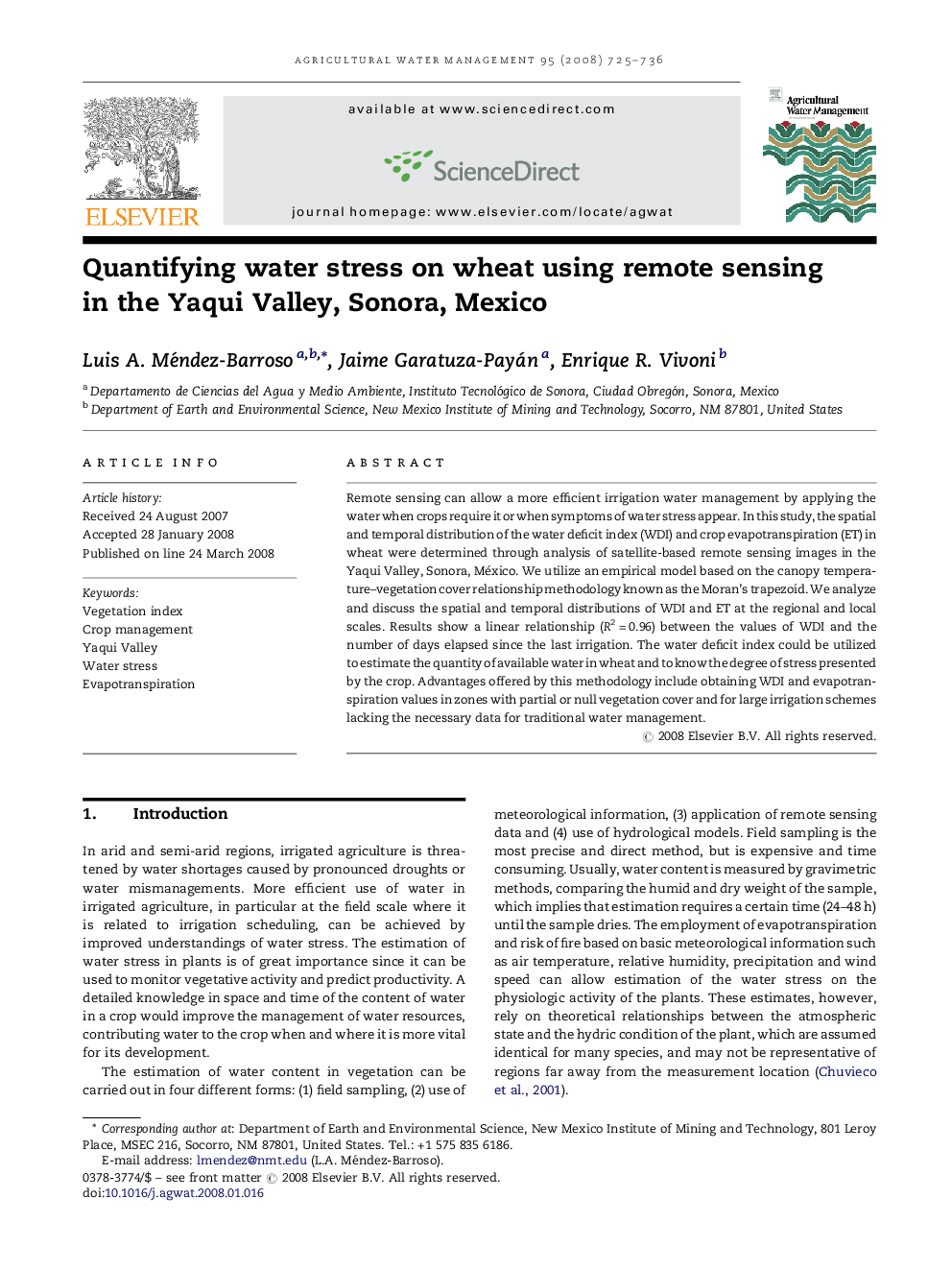| Article ID | Journal | Published Year | Pages | File Type |
|---|---|---|---|---|
| 4480304 | Agricultural Water Management | 2008 | 12 Pages |
Remote sensing can allow a more efficient irrigation water management by applying the water when crops require it or when symptoms of water stress appear. In this study, the spatial and temporal distribution of the water deficit index (WDI) and crop evapotranspiration (ET) in wheat were determined through analysis of satellite-based remote sensing images in the Yaqui Valley, Sonora, México. We utilize an empirical model based on the canopy temperature–vegetation cover relationship methodology known as the Moran's trapezoid. We analyze and discuss the spatial and temporal distributions of WDI and ET at the regional and local scales. Results show a linear relationship (R2 = 0.96) between the values of WDI and the number of days elapsed since the last irrigation. The water deficit index could be utilized to estimate the quantity of available water in wheat and to know the degree of stress presented by the crop. Advantages offered by this methodology include obtaining WDI and evapotranspiration values in zones with partial or null vegetation cover and for large irrigation schemes lacking the necessary data for traditional water management.
